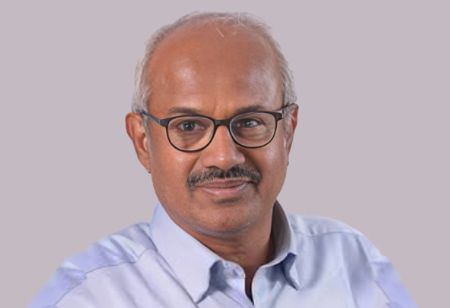Sriram Ravilla, Managing Director, Aurolab

Sriram Ravilla, Managing Director, Aurolab in a recent interaction with India Pharma Outlook, shares his views on the current trends in adopting multifocal and extended depth of focus (EDOF) lenses within the visual healthcare market, how multifocal and EDOF lenses reduce dependence on glass post-surgery, and what impact does this have on patient satisfaction and more.
To begin with, can you highlight the current trends in adopting multifocal and extended depth of focus (EDOF) lenses within the visual healthcare market, and how are these trends shaping the industry?
In recent years, the emergence of advanced technology lenses has been gaining significant traction. EDOF (extended depth of focus), as well as, multifocal intraocular lenses are often referred to as advanced lenses. Owing to the enhanced visual quality they render to patients these lenses are becoming famous among ophthalmology practices. Hence, patients are inclined to invest in these options for the added benefits they render.
The multifocal lens technology has witnessed considerable advancements in the past four to five years. The manufacturing process behind these lenses has become more standardized. This helps in ensuring greater consistency in quality. Furthermore, new insights into how patients adapt to multifocus lenses have emerged, which helps in enhancing the outcomes for those who opt for these lenses.
We have also witnessed the introduction of several lens designs and each of these brings unique enhancements for visual clarity coupled with patient comfort. Furthermore, in the marketplace, these innovations have now contributed to an increasing acceptance of multifocal lenses.
There has been a significant shift in consumer behavior, post-COVID, as patients are now willing to allocate additional resources toward healthcare. These include premium options such as advanced technology lenses. Combined with the continuous refinement of multifocal designs, this shift has resulted in a rapid increase in the adoption of lenses.
How do multifocal and EDOF lenses compare with traditional single-vision lenses in terms of patient outcomes and satisfaction?
Multifocal lenses & Extended Depth of Focus (EDOF) lenses are the 2 distinct categories of lenses. Although these two are classified as advanced technology lenses, these lenses differ in their design, as well as, the range of vision they offer. An evolution of the standard mono-focal lenses, with a few improvements, are EDOF lenses. Traditional mono-focal lenses are designed for offering clear vision at a single distance and these are often optimized for distance vision this means patients would need glasses for intermediate tasks such as reading or working on a computer. EDOF lenses bridge this gap to some extent as they provide an extended range of vision, which allows patients to see even more clearly from intermediate distances to far distances. Although EDOF lenses would not eliminate the requirement for reading glasses, they reduce dependency on them significantly, specifically for intermediate vision tasks.
On the other hand, multifocal lenses are even more complex in their functionality & design and these lenses are available in two basic types such as bifocal as well as trifocal. Bifocal lenses are designed to provide clear vision at 2 distinct focal points which are typically near as well as far, this comes with some coverage for intermediate vision. Trifocal lenses go a step further, rendering vision correction at far, near, and intermediate distances. And this helps in covering the complete spectrum of visual needs. A few companies claim their lenses can provide optimal performance across ranges.
However, owing to the fundamental limitation of light distribution, achieving perfect clarity across all distances is challenging, from a scientific standpoint. As there is only 100 percent light energy to work with, dividing it among 3 different focal points leads to compromises in visual quality inevitably. Also, the distribution of light between far, immediate & near distances often leads to reduced contrast sensitivity and this means not all distances can be optimized completely.
EDOF lenses primarily use refractive optics although a few are designed with minimal diffractive elements. This combination helps them in rendering a better depth of focus rather than standard refractive lenses, improving vision from intermediate to far distances without compromising on contrast as much as multifocal lenses do.
The choice between multifocal lenses & EDOF is based on the lifestyle of the patient as well as specific visual needs. While multifocal lenses are better for patients who desire a broader range of vision, from near to far, based on their daily activities & vision demands, EDOF lenses are recommended for patients who require strong intermediate & distance vision.
How do multifocal and EDOF lenses reduce dependence on glass post-surgery, and what impact does this have on patient satisfaction?
These spectacles reduce the patient’s reliance on glasses to a greater extent. This means that while patients would still need reading glasses for close-up tasks, but will not need it for most other activities. Essentially, for tasks that do not involve reading, glasses are often necessary.
Although it is crucial to note that it does not completely alleviate the need for spectacles in all cases, the reduction in dependency is quite beneficial. Patients may still need glasses for specific tasks in certain situations like reading fine print. However, for some individuals, specifically for those with less demanding near-vision requirements, these lenses can eliminate the requirement for spectacles, rendering them with a more convenient, glass-free lifestyle.